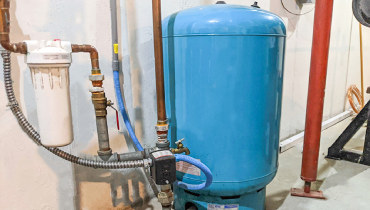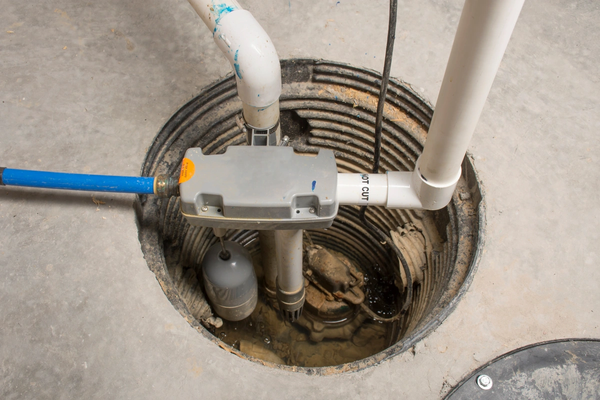Proven Strategies for Addressing Low Water Pressure in Your Home
Proven Strategies for Addressing Low Water Pressure in Your Home
Blog Article
They are making a few great pointers relating to 10 Reasons for Low Water Pressure in Your House overall in this great article down the page.

Low tide pressure in your house can be an aggravating problem, influencing everything from showering to cleaning dishes. If you're experiencing weak water circulation, there are a number of feasible reasons and services to discover. In this guide, we'll talk about common reasons for low tide pressure and sensible actions to deal with the concern properly.
Intro to Low Tide Stress
Low water pressure occurs when the flow of water from your taps, showers, and other components is weak than common. This can make daily jobs a lot more tough and less effective. Understanding the reasons for low tide pressure is essential to locating the best remedy.
Common Reasons For Low Tide Pressure
Faulty Stress Regulatory Authorities
Pressure regulatory authorities are accountable for maintaining regular water stress in your home. If they malfunction, it can lead to low tide stress or unequal flow throughout your home.
Local Water System Issues
Often, the issue lies outside your home. Community water system issues, such as main line leaks or upkeep job, can briefly minimize water stress in your area.
Pipe Obstructions
Over time, pipelines can end up being clogged with mineral deposits, debris, or debris, restricting the flow of water. This is a common concern in older homes with galvanized steel pipes.
Corrosion
Rust within pipes can cause leakages and minimized water pressure. Corrosion accumulation can constrict water flow, specifically in maturing plumbing systems.
Exactly How to Identify Low Tide Pressure
Inspecting Pipelines
Evaluate noticeable pipelines for indications of leakages, deterioration, or obstructions. Pay attention to any uncommon noises, such as knocking or rattling pipes, which might suggest problems within the plumbing system.
Consulting with a Plumber
If you're unable to identify the reason for low tide pressure, take into consideration hiring a specialist plumber to conduct a detailed evaluation. They can recognize underlying concerns and advise suitable services.
Inspecting Taps and Components
Start by evaluating the water pressure at various faucets and fixtures throughout your home. If the problem is separated to particular locations, it might show local issues.
Do It Yourself Solutions to Fix Low Water Stress
Flushing Hot Water Heater
Debris accumulation in the hot water heater can restrict circulation and reduce performance. Purging the container regularly aids get rid of sediment and keep optimum efficiency.
Examining Pressure Regulatory Authority
Guarantee that the pressure regulator is working correctly. Readjusting or replacing the regulator can help recover proper water pressure throughout your home.
Cleaning Aerators and Showerheads
Mineral deposits can collect in aerators and showerheads, reducing water flow. Get rid of and clean these elements frequently to enhance water stress.
Cleaning Clogs in Pipes
For small obstructions, attempt making use of a plumbing snake or chemical drain cleaner to clear blockages in pipelines. Beware when utilizing chemicals and comply with security standards.
When to Call a Specialist Plumber
If do it yourself initiatives stop working to solve the issue or if you believe considerable plumbing troubles, it's finest to look for help from a qualified plumber. They have the know-how and devices to resolve complex concerns safely and efficiently.
Safety Nets to Preserve Water Stress
Installing a Pressure Booster
Think about installing a stress booster pump to enhance water stress in areas with consistently reduced circulation. This can be specifically advantageous for multi-story homes or residential properties with high-demand components.
Tracking Water Usage
Bear in mind water use routines and stay clear of ill-using the plumbing system. Basic changes, such as astonishing showers and washing lots, can aid preserve sufficient water stress.
Regular Upkeep
Arrange routine maintenance for your plumbing system to prevent concerns such as deterioration, leaks, and obstructions. Dealing with small problems early can help avoid more considerable repairs later.
Final thought
Dealing with low water pressure can be frustrating, however identifying the underlying causes and implementing appropriate solutions can recover optimal circulation throughout your home. Whether it's cleansing aerators, evaluating pipelines, or talking to a plumber, taking positive steps can make certain a stable supply of water for your everyday demands.
FOUR WAYS TO FIX LOW WATER PRESSURE NOW
Turning on a shower or faucet only to find the water comes out in a sad, slow drizzle is never a good feeling. How exactly are you supposed to wash a pan or take a quick shower when it takes 10 minutes just to rinse off a little soap? The good news is that when your water pressure is bad, there's always a cause: typically one that can be easily fixed. Here are some of the most common causes of low pressure and what you can do to fix the issue:
DEBRIS AND MINERAL DEPOSIT BUILDUPS
If you notice low water pressure from just one or two of the fixtures in your house, the problem likely has to do with debris buildup. Water is full of minerals and other debris, all of which can accumulate in your pipes and on your fixtures. This can cause a blockage that affects how much water flows through. To fix this, try filling a small plastic bag with white vinegar, and use a rubber band to hang it around your showerhead or faucet. Let the head of the fixture soak for a few hours, and the vinegar should loosen the deposits.
WATER LEAKS
Leaks are another common cause of low water pressure. If water is flowing out of your plumbing through a hole or crack before it can reach your fixture, the pressure coming out of the faucet or showerhead will be lower. A plumbing professional is your best bet for finding and repairing a leak in your water supply pipes.
Leaks are another common cause of low water pressure. If water is flowing out of your plumbing through a hole or crack before it can reach your fixture, the pressure coming out of the faucet or showerhead will be lower. A plumbing professional is your best bet for finding and repairing a leak in your water supply pipes.
A VALVE ISSUE
If you have low water pressure throughout your home, check your main shut-off valve to make sure it's completely open. You may also want to see if there's a pressure-reducing valve installed. If there is, have a plumber help you adjust the settings to get the pressure you're looking for.
OTHERS USING WATER
Believe it or not, your low water pressure could be caused by your neighbors. If you notice low pressure at certain times of day, it may be because you and the people living next to you have similar schedules - when everyone is showering at the same time, the pressure will be lower in every home. Low pressure throughout the neighborhood may also be caused by an issue with your municipal water supply. If that's the case, call the supplier to see if they're working on the issue.
https://www.rotorooter.com/blog/water-leaking/low-water-pressure-fixes/

As an avid reader about , I assumed sharing that article was essential. Liked our article? Please share it. Let others locate it. I enjoy your readership.
Call Today Report this page